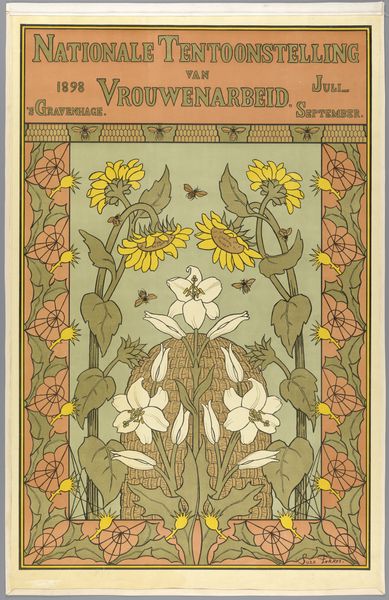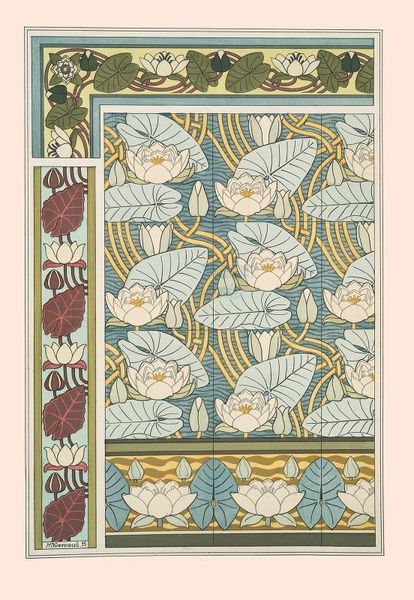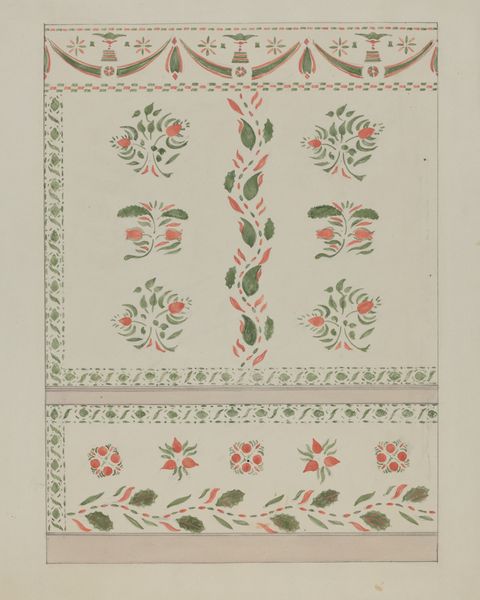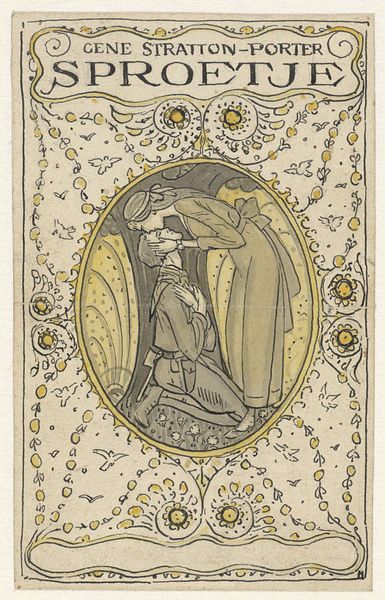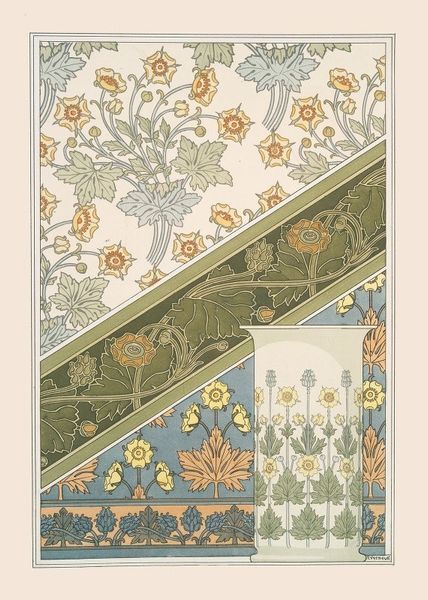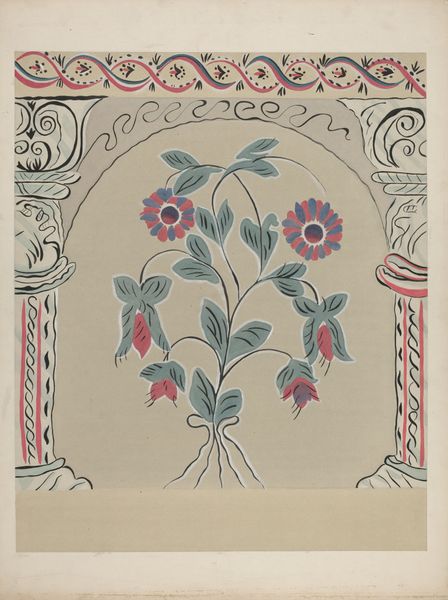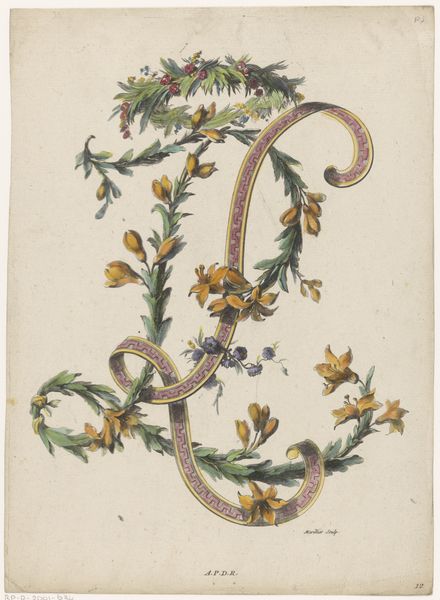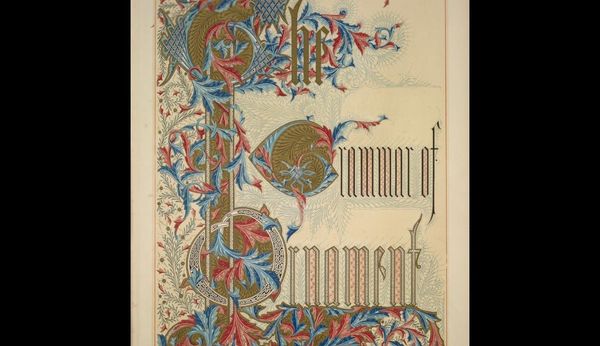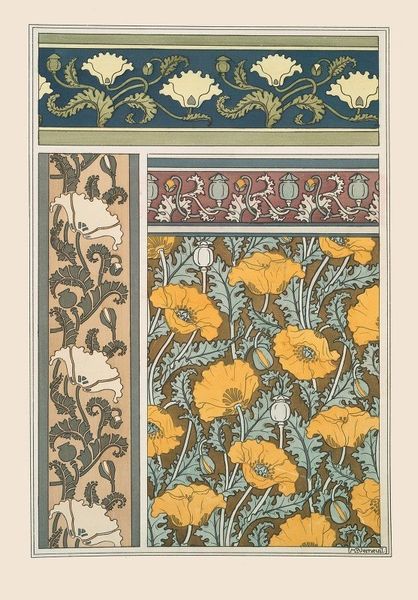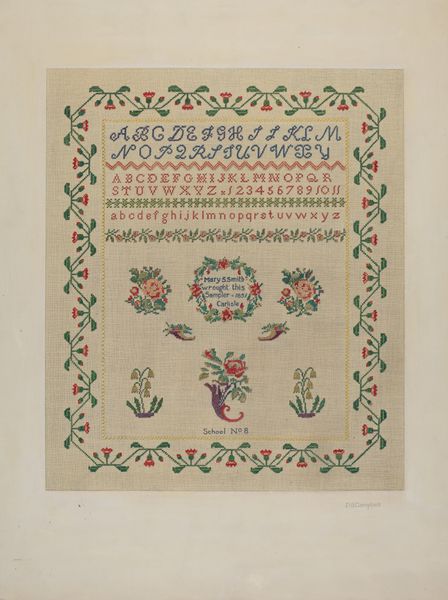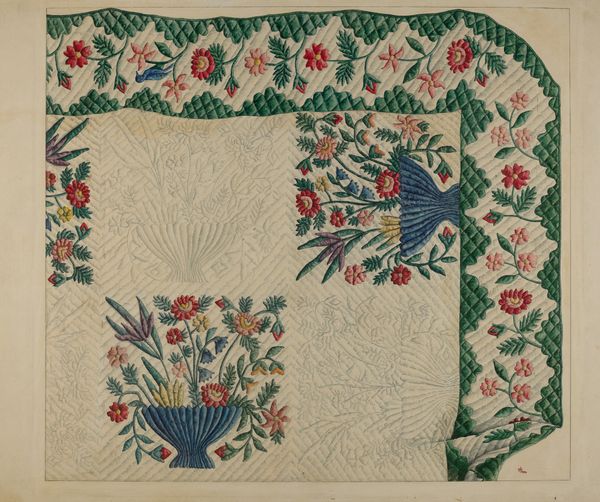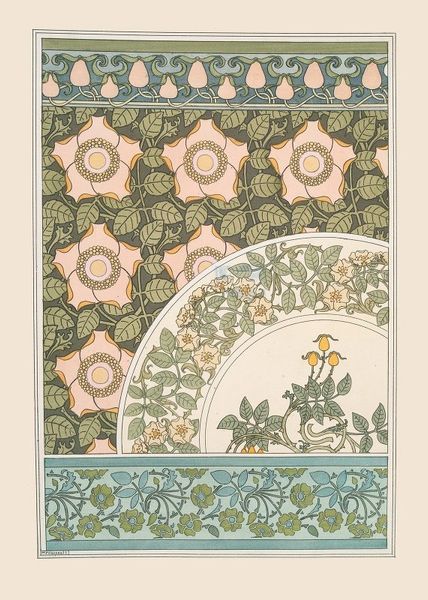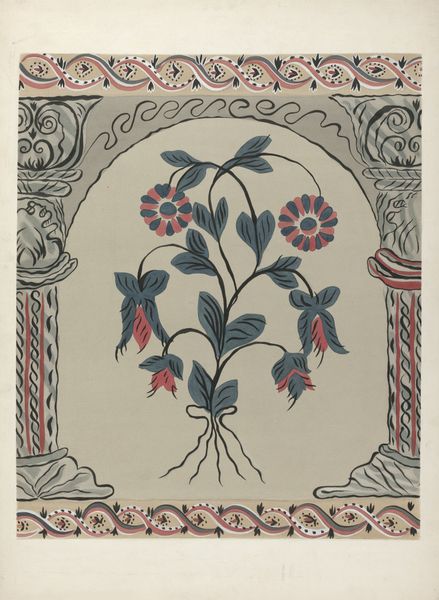
drawing, graphic-art, poster
#
drawing
#
graphic-art
#
art-nouveau
#
landscape
#
figuration
#
line
#
decorative-art
#
poster
Dimensions: height 357 mm, width 284 mm
Copyright: Rijks Museum: Open Domain
Curator: This is Theo Nieuwenhuis's "Kalenderblad voor juli 1898," a drawing dating back to 1897. Editor: My first impression is that there's an undeniable sense of gentle melancholy here. It has a beautifully muted color palette and feels like a daydream. Curator: Absolutely. The piece exemplifies Art Nouveau’s decorative style. Calendars such as these emerged alongside social changes. Mass-produced printed media influenced advertising, culture, and politics at the turn of the century. Note how the female figure almost fades into the decorative background. What statements were being made by the placement and prominence of women in an era of increasing independence and agency? Editor: From a formal standpoint, observe how Nieuwenhuis uses line. The consistent weight gives the work a sense of unity. The stylized flowers and flowing vines also demonstrate this, creating an intricate, interwoven pattern. Curator: The depiction of nature, though stylized, connects to the broader societal trends. An industrialized population looking back to nature amid rising social and environmental concerns, even today we grapple with some of the issues visualized in decorative formats like this. The flowers on her robe, the ones she holds, as well as those framing her all carry a social narrative. What does nature, even the depiction of it, mean to a population that becomes further disconnected from it? Editor: I see the way the pattern acts almost as a cage. The woman's placid expression betrays this slightly, but there is a clear, controlled structure that acts like a formal boundary. The limited range of color gives the image an almost monochromatic feel, and contributes to this subtle mood of containment. Curator: I find it fascinating how this decorative piece serves as a time capsule, reflecting the era’s aspirations, anxieties, and artistic trends, reminding us that even seemingly simple designs are intertwined with intricate cultural narratives. Editor: It underscores, for me, how closely interwoven art and life truly are, both within their own time and in ours. The artist clearly chose a reduced but highly structured syntax. In terms of understanding color and line, and balance of elements on the plane, this drawing becomes quite instructive.
Comments
No comments
Be the first to comment and join the conversation on the ultimate creative platform.
